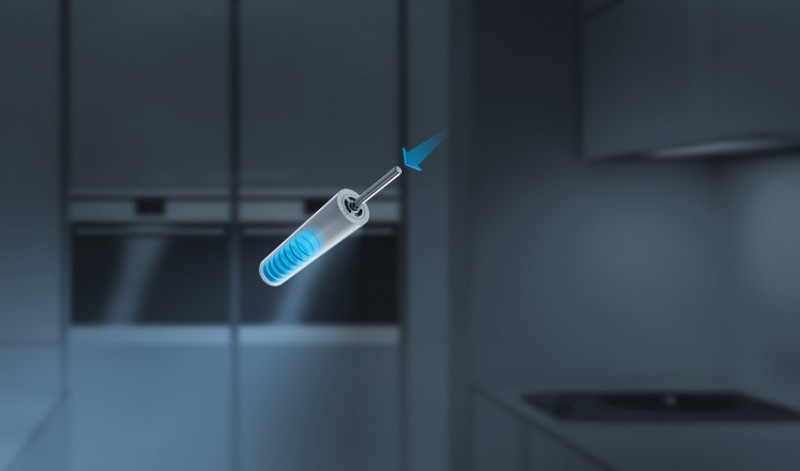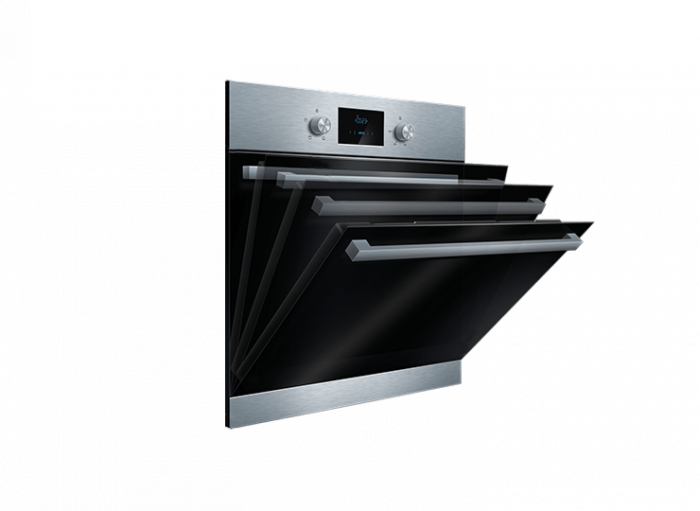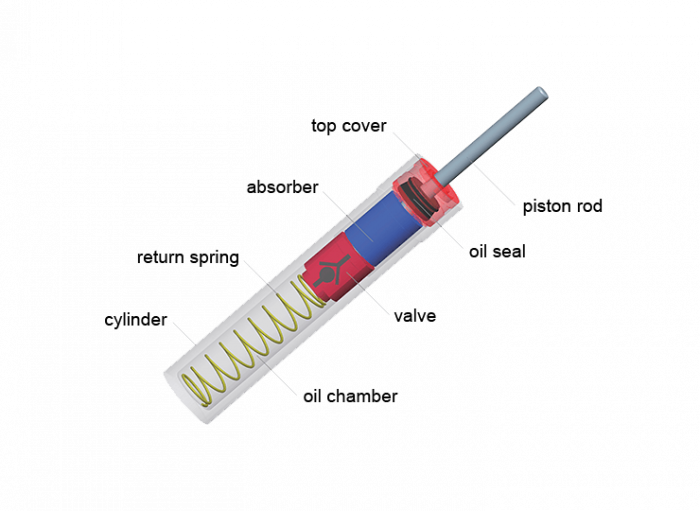How the Use of Dampers Reduces Noise Levels in our Homes

0-minute read
Our home should be a sanctuary where we find a relaxing and peaceful environment. But is it? Tadej Borstnar, an experienced Applications Engineer at Titus Group for many years, explains how adding a damping feature reduces the noise pollution in our homes, and how to effectively resolve challenges with damping applications.
Noise pollution in our homes
Noise is an unpleasant sound which disturbs concentration, communication, relaxation and sleep. Noise affects our quality of life. In these modern times, it is hard to avoid all urban noises caused by transport, people and machines… Our home should be a sanctuary where we find a relaxing and peaceful environment. But is it? Many times, we don’t even realize how much noise stems from our everyday activities such as preparation of our meals with opening and closing of cabinets, drawers and doors in the kitchen; opening various lids like waste bins; and appliances such as ovens, washing machines and refrigerators. We often start our day hearing noises in the bathroom from toilet seats, and sliding shower doors. However, noise control within our homes is very achievable.
Several studies highlighted the negative impact of noise on public health including but not limited to emotional changes, namely agitation, distraction, disappointment, stress, hypertension, the development of cardiovascular diseases. According to WHO, 1.3 billion people suffer from this condition and 10% of the global population are currently exposed to noise levels that could lead to hearing impairment.

Reduce noise with installation of damping devices
Soft closing devices built into home equipment can significantly reduce or eliminate various unpleasant sounds occurring when opening, closing or from other types of movement when two elements hit each other. Usually the components built into furniture, cabinets, household appliances, waste bins, sliding doors, toilets, etc. are of solid materials: wood, plastic, metal… causing a loud sound when they collide. Slowing down and controlling the movement is achieved with dampers/snubbers thereby reducing or eliminating noise.
Adding a soft motion control device increases the value of a product and improves user experience without affecting the basic functionality of the product.

Safety in use and extended life-cycle
A shock absorber also reduces wear and tear on components, which leads to longevity. A significant sign of lack of damping is stressed material which tends to fail quicker. Every day collision of materials causes unnecessary vibrations in mechanisms and, over time, can result in incorrect closing. Motion control dampens the movement of two elements and keeps them from hitting each other excessively removing performance and maintenance issues associated with worn materials.
Installation of a damper can also avoid issues related to safety; for example, trapping a finger when closing a cabinet door. Opening and closing, lifting and lowering lids can be uncomfortable and sometimes dangerous if heavy and sharp objects, like furniture or an oven door, descends or closes quickly. This is where dampers come in. They regulate uncontrolled movements of lids and are helpful in enhancing safety. Even when closing a lid fast or forcefully by hand, a damper will always provide controlled movement.
Experience from cabinet furniture
Research indicates that today’s consumers of furniture recognize the noise issue and rank quiet performance of furniture cabinets very highly among their purchasing criteria.
In 2012, research was conducted in the United Kingdom, Germany and Slovenia to uncover consumers’ preferences and perceptions of what constitutes a quality cabinet door opening/closing motion. Soft closing was exposed as an important factor by more people than anything else, with ‘Don’t slam’ being the second most cited factor. The overriding reason why these two factors were most important was related to noise and the wish for quiet, which was mentioned by 41.4% of respondents. The research, conducted by IMR Institute for Marketing Research in Germany, indicated that the ‘closing noise’, ‘close automatically’ and ‘stay closed’ were most often mentioned as an important aspect regarding the closing of cabinet doors. The closing noise is regarded as important mainly because loud noises are perceived as painful. Cabinet doors that stay closed are considered as better looking with the closing speed indicating the quality of the cabinet doors.
Research in Slovenia was carried out by Studio Marketing JWT in collaboration with Aragon. It confirmed that the closing speed, the closing softness and the closing point were the most important aspects of the furniture closing. The participants placed great emphasis on the closing speed as the quality measurement. The closing speed was also related to consumer’s safety. Hence, the closing softness was related to quiet closing and prevention of slamming.
Consumer research and experience from the furniture industry confirms that a damper has obvious advantages for improving the functionality of home equipment and enhancing the quality of living in our home environment. It is already ‘a must’ in drawers, lift-up/ drop-down mechanisms, swinging doors on cabinets and is becoming increasingly present in various lids, house hold appliances, waste bins, interior door, commercial refrigerators and in aircraft.
How to effectively resolve challenges with damping applications
To improve the consumer experience with a damping feature built into a piece of home equipment, designers often face the challenge of only small spaces available for dampers, high loads and life-long performance expectations at repeated cycles in environments with wide temperature ranges. A hydraulic damper successfully responds to those challenges with the ability to perform consistently in a wide temperature range without degradation with the advantage of fine tuning the damping force, stroke and characteristics.
Hydraulic dampers, with their long- life expectancy, transmit heavier damping forces compared to air and gas dampers. They also have a lower tendency to re-bounce compared to air dampers and use oil which is less sensitive to compression air in the air damper. They transmit higher forces compared to air dampers.
A hydraulic damper effectively responds to the challenge of small spaces as product designs become more compact. They work well and consistently in fluctuating temperature environments. Hydraulic dampers use special silicon oil for the damping medium. Silicon oil is available in various viscosities which affects the damper force. The same damper design with a different oil viscosity will result in different damping forces. The oil’s viscosity changes when a damper is heated or cooled.
Forces increase when a damper is cooled and decreases when a damper is heated. A similar principle applies to achieve different moving speeds – when increasing a piston speed through a medium, the response force will also increase and vice versa.
The damping force is generated by moving a piston/valve through a medium (shown in figure below).


The piston is the key component of a damper assembly, a small, tightly-tolerance hole creates a pressure difference. The pressure difference creates a force-resisting damping motion. A spring in the damper is used to return the piston to its starting position, which can be achieved also by pulling the piston rod with a connector, in which case the spring is not required.
The absorber is an element that compensates for the difference in volumes when the piston rod is travelling in and out of the damper. Dampers can be ‘tuned’ to the specific requirements of custom applications.
A wide array of possibilities for damped movement in home products
Motion control devices provide comfort and make our life easier and more pleasant. Damping can be applied to products in all rooms in the our home. Thanks to high and low temperature resistance and effective performance even in circumstances with great force, hydraulic dampers perform excellently controlling the motion of all house hold appliances such as oven and refrigerator doors, top loading washing machine lids, racks in dish washers, and large and heavy bedroom cabinet doors smoothly gliding on sliding door systems that close silently. Bathroom’s waste bin and toilets seat keep a quiet environment in bathrooms. Sound dampening has spread outside the home to other industries like hospitals where a quiet and calm environment is necessary. Dampers control the moving part of treatment chairs, walkers, operating tables, hospital bed elements, exit doors, and sliding doors etc. Dampers can be found also in automotive and aeronautic industries. Armrests and consoles in cars, storage areas, overhead bins and doors in airplanes use dampers to prevent uncontrolled slamming.
In a world where you can hardly find a quiet environment, consumers have started to appreciate having products that don’t make unnecessary noise when used. Sound is an important consideration when deciding which wardrobe or washing machine to buy. Soft-close features are in high demand which pushes OEM manufacturers and cabinet makers to make it standard rather than an upgrade or luxury feature.